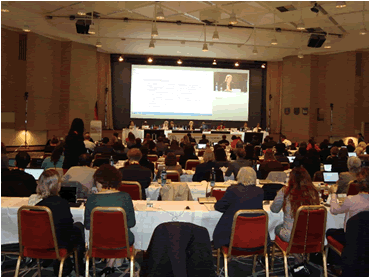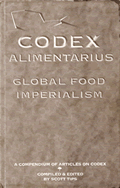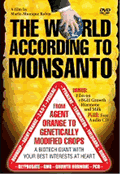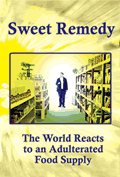NHF's
HARD STAND ON NUTRITION AT CODEX PAID OFF
PART 2 of 2
By
Attorney Scott Tips, JD
December 26, 2015
NewsWithViews.com
Follow-Up Formula for Infants
Another contentious Codex issue was the proposed standard for Follow-Up Formula (or FUF as it’s called at Codex). The New Zealand-led Working Group presented its findings, with several consumer groups strongly challenging the need for this formula at all, seeing it as nothing more than a commercial marketing ploy to pry older infants away from both breastfeeding and local foods. In particular, the International Baby Formula Action Network (IBFAN), the International Association of Consumer Food Organizations (IACFO), the Helen Keller International, and the NHF argued for inclusion of language that “the use of [FUF] product should not replace breast milk.” This position was also strongly advocated by South Africa, Ecuador, Nepal, WHO, and others. Unfortunately, the Chairwoman agreed with those in the Committee who opposed the wording and so it was removed.
The
rest of the day was spent discussing the individual vitamin and mineral,
protein, and sucrose levels of FUF in an attempt to set minimums and
maximums. In the case of sucrose, South Africa, India, and WHO especially
objected to its inclusion in any FUF. Regardless, the Committee’s
review of this standard was far from finished and will continue for
many years in the future. In the meantime, millions of children will
suffer the abuse of a sub-standard, needless product brought to market
merely to “make a market” of them; and adding insult to
injury, the majority of the delegates and INGOs agreed.
Biofortification
Day Three of the meeting began with clean-up work on the FUF agenda item but then moved on to Biofortification, which needed first of all to be defined. An electronic Working Group, headed by South Africa and Zimbabwe, proposed four possible definitions to the Committee, but the discussions swirled around the hot topic of whether or not genetically modified (recombinant-DNA) technology should be included in the definition.
Those pushing a standard for Biofortification, particularly the International Food Policy Research Institute (IFPRI) led at Codex by the redoubtable Dr. Anne Mackenzie of Canada, eloquently argue that Biofortification itself as a concept is neutral and that it would be up to each jurisdiction to decide for itself whether Biofortification would include recombinant-DNA technology or not. To Dr. Mackenzie, Biofortification is simply the process by which the nutritional quality of food crops is improved through plant breeding with the aim of making the nutrients bioavailable after digestion. To most of us that means “conventional” plant breeding.
Iran, India, and Sudan quickly took the floor to argue strongly that the Biofortification definition should exclude GM techniques. They were soon joined by Nepal, Ghana, Paraguay, Uganda, and surprisingly enough Australia. Australia quite reasonably argued that if the Committee were to go back to the original document in 2012 regarding the Scope of Biofortification, it would tell us that Biofortification only refers to conventional breeding and so we should clearly exclude GM techniques. When NHF was called upon to speak, I supported Australia’s and the other anti-GM delegations’ comments, adding that consumers could be fooled if GM techniques were not excluded from the definition. Of course, Canada, the United States, and New Zealand wanted a broad definition that includes biotechnology. And IACFO asked the sensible, but apparently rhetorical question, “Who owns these new foods?” In the end, nothing was resolved and the Chairwoman ruled that further discussion on the definition was needed.
But before the Biofortification issue completely fizzled out, the Chairwoman dragged the body through several other sticky points, including one near and dear to NHF: “decreasing anti-nutrients in foods.” The EU was keen to decrease so-called “anti-nutrients” in biofortified foods; but I pointed out to the delegates that the term had not even been defined, so I asked them exactly what were “anti-nutrients”? Answering my own question, I then said that if they included phytates, they were barking up the wrong tree as phytates had positive health effects and their reduction might actually be counter-productive. I then recited a long list of those benefits to the Committee.
 Nepal,
NHF & Malaysia delegates
Nepal,
NHF & Malaysia delegates
EPA/DHA Omega-3 Fatty Acids
The Russian and Chilean delegations had led an electronic Working Group to establish an NRV (for non-communicable diseases) for EPA and DHA long-chain Omega-3 fatty acids and Russia presented its report at the meeting. The eWG had established an NRV of 250 mg/day as the consumption value that would reduce the risk of coronary heart disease mortality. Astoundingly, objections to an NRV for EPA/DHA (which are, after all, essential fatty acids, meaning that we do not make them and must consume them) were quick to erupt. New Zealand, Canada, and Brazil all claimed that no relationship had been proven and so no NRV was necessary here. Norway and China strongly disagreed and supported establishing an NRV, whereupon the United States jumped in with its anti-NRV position.
I then had a chance to speak and asked Canada and the United States how they could possibly hold an anti-NRV position here when Health Canada has an approved therapeutic claim and the U.S. FDA has had for 15 years an approved qualified health claim for exactly these same Omega-3 fatty acids. I suggested that if the Committee had a problem with the amount of EPA/DHA, then it could simply put the value of 250 mg in brackets, which would mean that we would consider that value at the next meeting.
Incensed at being taken to task by NHF, the U.S. delegate haughtily read from the actual FDA-approved qualified claim as if that proved her point that there was no conclusive proof that these substances helped reduce coronary disease mortality. All it did, though, was prove her ignorance of the history of the health claim in the United States, where the FDA had to be dragged, kicking and screaming and gouging eyes all along the way, into accepting a qualified health claim and even then only after inserting all sorts of weasel words into the claim.[5]
The Canadian delegate was more sanguine and merely said that Canada was not certain whether the 250 mg/day value was the correct one. Later on, in fact, Canada would save this NRV from extinction.
The IADSA spokesman, Professor David Richardson, was absolutely brilliant in his defense of an NRV for EPA/DHA. He laid out the scientific case for EPA and DHA and their health benefits in a very measured and convincing fashion, asking the delegates the very sensible question: “Isn’t this recommendation better than no recommendation at all?” The spokesman for the Council for Responsible Nutrition (CRN) agreed and quoted Voltaire when he said “Perfect is the enemy of good.” Finally, the Global Organization for EPA and DHA Omega-3s (GOED) (yes, such an organization does exist) also supported an NRV for EPA/DHA.
Then, in a curious temper-tantrum that one doesn’t often see at Codex, the WHO representative, Dr. Chizuru Nishida, suddenly erupted with a series of complaints, asking “Is our work not good enough? Should we no longer participate at Codex?” Dr. Nishida wanted the Committee to wait for a review by one of WHO/FAO’s scientific bodies; and the capable Codex Secretariat, Tom Heilandt, quickly reassured her that Codex did indeed look to WHO and FAO as its primary sources of scientific advice. “We have a great program here,” Dr. Nishida weakly implored. The FAO representative sympathized with her, while the Chairwoman looked around for a way out. It came to her. “There’s no consensus,” Dr. Noble said, “and some member states doubt whether evidence exists to support an NRV here.” After much back and forth about which scientific body would review the evidence, I took the floor again to remind the Committee that WHO had already given its opinion on the evidence and that it was all right there for the Committee to see on the projected screen: three WHO and FAO consultation reports! I asked, “Do we really need yet another WHO report to confirm what it has already said three times?”
But the Chairwoman had had enough. “We will discontinue this work. We can take this up again when the evidence is there.” Chile quickly leapt in to argue against discontinuing the work. Russia, Canada, and Senegal supported Chile, with Canada arguing NHF’s point that the way forward was to simply place the 250 mg/day value in square brackets (signifying that it’s still open for discussion) and continue working on it at next year’s meeting. Convinced by these arguments and especially Canada’s “brackets” suggestion, the Chairwoman agreed and said that the NRV would still be on the table for next year’s meeting, but yet not without WHO’s pitiful parting plea, “Our work should not be ignored next year!”
 CCNFSDU
Meeting Room
CCNFSDU
Meeting Room
The Scorecard
Ernest Hemingway once wrote, “Never mistake motion for action.” And, unfortunately, there is a lot of motion at Codex that is mistaken for action. Time and again, “scientific” values were arrived at not by deciding which of them was scientifically correct or even the best value but instead simply by reaching a compromise that averaged questionable values to reach a final decision. This approach is akin to “averaging” Ptolemaic, Newtonian, and Einsteinian physics in order to arrive at the “truth.” The scientific world does not, or at least should not, work that way if it wants to accurately reflect reality.
Equally troubling was the strange lack of knowledge concerning recent advances in nutritional knowledge. That any supposedly well-informed delegates would even consider, for example, arguing for a 200-IU/day NRV for Vitamin D shows such an incredibly profound poverty of nutritional scholarship that it is stunning. Have they been in a cave for 20 years? Do they not read? Where have they been all this time?
Still, despite the widespread affection for “two-dimensional” science and nutrition at Codex, six years after the “Dusseldorf Miracle,” I see numerous delegations arguing for higher nutritional standards, whereas six years ago NHF was virtually alone, supported only by India and Iraq. Now, the line forms to the left; and what I find is a resurgent South Africa refusing to back down from positions supporting optimal nutrition. The South African Codex delegation is, in my opinion, truly concerned about the health of its citizens, as are the Iranian, Malaysian, Bangladeshi, Indian, Nepalese, and many other country delegations.
Even our opposition was more muted and restrained. Australia, our key opponent for years in this Committee, was quieter and even helpful at times.[6] Remember, they did not support including GM techniques in the Biofortification definition. Delegations are waking up to the idea of optimal nutrition even if they are not yet altogether there yet.
|
|
It is true that if anyone with a smidgeon of nutritional knowledge looks at the current NRVs for vitamins and minerals, they could smirk and call them a joke because they are still too low for optimal nutrition. Yet, considering where they might have been had NHF not succeeded six years ago, we are all far better off than had that alternative universe of possibilities taken us downward instead. The momentum has changed. No longer are delegations talking about reducing vitamin and mineral values; instead, the discussion looks upward and NHF has helped pave the way. That is progress. And hope for what the future portends. Better nutrition for the World? Dare we hope? Yes, most definitely; but act we must. For part one click below.
Click here for part -----> 1, 2,
� 2015 - Scott Tips - All Rights Reserved














 Share
This Article
Share
This Article





